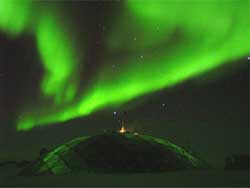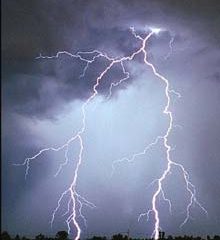Earth Sciences
Earth Sciences (also referred to as Geosciences), which deals with basic issues surrounding our planet, plays a vital role in the area of energy and raw materials supply.
Earth Sciences comprises subjects such as geology, geography, geological informatics, paleontology, mineralogy, petrography, crystallography, geophysics, geodesy, glaciology, cartography, photogrammetry, meteorology and seismology, early-warning systems, earthquake research and polar research.

Climate ‘memory’ may aid long range forecasts
Researchers at Harper Adams University College, Shropshire, believe a ‘memory’ in the climate system could be tapped to improve long-range weather forecasts.
In the April edition of ‘Weather,’ the journal of the Royal Meteorological Society, an article co-written by Dr Peter Kettlewell will show how summer rainfall levels in the UK are affected by ‘remembered’ changes in winter air pressure over the North Atlantic ocean. The article is based upon the work of a team headed by Dr Kettlewell,

Encrustation provides clues about ancient seas
David L. Rodland, a Ph.D. student in Virginia Tech’s Department of Geological Sciences, has been studying encrustation, or the colonization of seashells by other marine organisms that live permanently attached to hard surfaces.
Examples of encrusting organisms (or epibionts) include serpulid and spirorbid worms, bryozoans, barnacles, and algae. Many epibionts produce their own calcareous tubes, shells, or skeletons, which are attached to that surface and may become fossilized along wit

Boundary Between Earth’s Magnetic Field and Sun’s Solar Wind Riddled with "Swiss Cheese" Holes
Magnetic fields explosively release energy in events throughout the universe, from experiments conducted in laboratories to huge outbursts within galaxies. On the Sun, these magnetic explosions are responsible for solar flares and ejections of material from the Sun’s corona.
Similar events associated with Earth’s magnetic field drive magnetic storms, and the dramatic brightening and expansion of the northern and southern lights, the aurora borealis and aurora australis. The reconnection of

Scientists Discover Effects from Rapid, Global Climate and Ocean Changes of the Past
An international team of marine geologists has just completed an expedition to an area off the coast of Surinam known as the Demerara Rise. The scientists were part of the two-month Leg 207 of the NSF-supported Ocean Drilling Program (ODP) expedition in the equatorial Atlantic Ocean. The project studied periods in Earth’s history that have undergone rapid climate and ocean circulation changes and likely led to mass extinctions of plants and animals.
Three decades ago, geologists found s

NASA study finds increasing solar trend that can change climate
Since the late 1970s, the amount of solar radiation the sun emits, during times of quiet sunspot activity, has increased by nearly .05 percent per decade, according to a NASA funded study.
“This trend is important because, if sustained over many decades, it could cause significant climate change,” said Richard Willson, a researcher affiliated with NASA’s Goddard Institute for Space Studies and Columbia University’s Earth Institute, New York. He is the lead author of the study rece

Study shows lightning adds to ozone level
Lightning may be Mother Nature’s greatest show on Earth, but scientists now know it can produce significant amounts of ozone and other gases that affect air chemistry.
Researcher Renyi Zhang of Texas A&M University helped lead a study on the impact of lightning, and the results are surprising: Lightning can be responsible for as much as 90 percent of the nitrogen oxides in the summer and at the same time increase ozone levels as much as 30 percent in the free troposphere, the area that